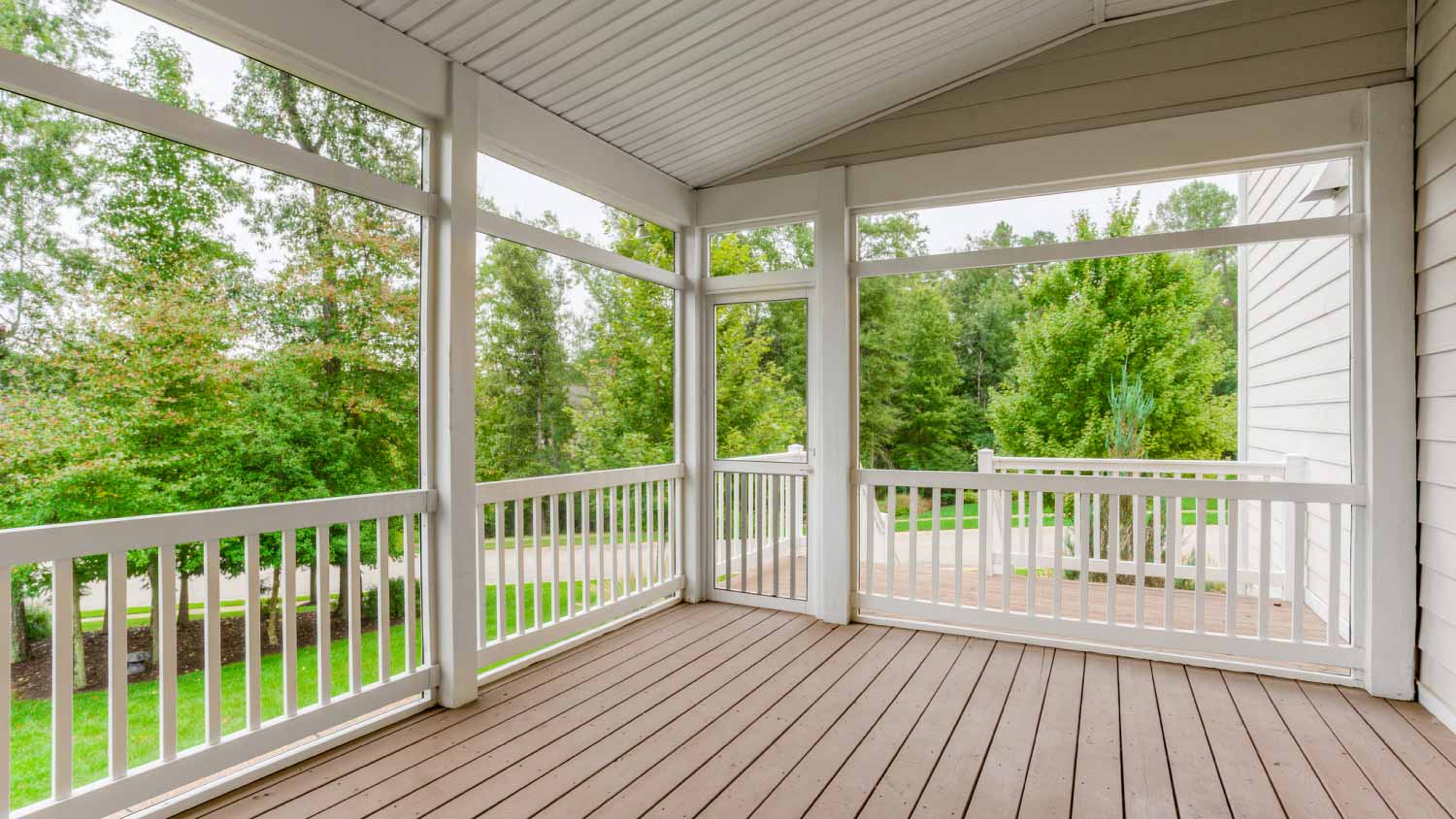
Homeowners can enclose their porches in a few different ways—each having their own price tag. Learn what contributes to the total cost to enclose a porch and how you can reduce the bill.
Make sure you’re fully covered when building this exterior feature


Building a screened-in porch requires a permit in most locations.
Whether you need a permit to screen in an existing porch depends on local regulations.
Check with your local building authority to confirm if you need to pull a permit for a screened-in porch.
Local requirements may dictate whether a homeowner or licensed contractor needs to pull a permit.
There’s nothing better than enjoying a quiet summer day protected from pesky bugs on a screened-in porch. If you’re considering building a screened-in porch or screening in an existing porch, you may need a building permit before beginning any work. Learn when you need a permit for a screened-in porch and what can happen if you don’t get one.
A screened-in porch is an outdoor home feature attached to an exterior wall—usually at the front or back entrance—with mesh screening enclosing the three open walls. Unlike a three-season room, a screened-in porch is not designed to be an extension of interior living space, but rather an exterior feature. The pros and cons of a screened-in porch can help you decide if this add-on is right for your home based on price, function, longevity, and effect on your home’s value.
Whether or not you need a permit for a screened-in porch depends on your local building codes and regulations. In most locations, you’ll need a permit to build a screened-in porch where no porch already exists. If you have an existing porch you want to screen in, check with your local building authority to confirm whether you need a permit for that work.
For any type of renovation project that involves adding a new feature to your home, make sure to look into whether or not you will need to obtain a permit or other kind of permission from your local area. Not all projects require these things, but many do, so you always want to check.
A contractor who builds screened-in porches will also be able to advise you about local permit regulations, but always confirm with the building authority, since it’s ultimately the homeowner’s responsibility to ensure a permit is pulled for a project.

You may be out more than the cost of a screened-in porch if you don’t obtain a permit when your municipality requires one. Building without a permit may mean facing fines or fees, running into issues with your homeowners insurance, or even having to tear down the finished work. Trying to sell a house with unpermitted work can cause serious complications with the sale, including buyers backing out of the sale completely.
If you need a permit for a sunroom or screened-in porch, the ultimate responsibility for making sure one is obtained is on the homeowner. Depending on your location, either the homeowner or a local sunroom contractor can pull the permit—some municipalities only allow certain types of permits to be pulled by licensed professionals. Your local building authority can clarify the permit process so you can legally proceed with your project.
From average costs to expert advice, get all the answers you need to get your job done.

Homeowners can enclose their porches in a few different ways—each having their own price tag. Learn what contributes to the total cost to enclose a porch and how you can reduce the bill.

Use our expert guide to figure out how much it costs to install a pool enclosure. Establish your budget, then plan your pool enclosure project.

While a solarium addition costs homeowners a fair amount of money, the return on investment is higher than most projects. Learn what affects the total cost and where you can save money.

A screened-in porch lets you enjoy the outdoors while being protected from bugs and direct sun. Learn the pros and cons of a screened-in porch.

Get some inspiration and DIY ideas for turning your screened-in porch into a beautiful and tranquil place to enjoy the outdoors in comfort and style.

Dreaming of having a sunroom in your home but wondering who builds sunrooms? Here's what you need to know about hiring a pro to build a sunroom.